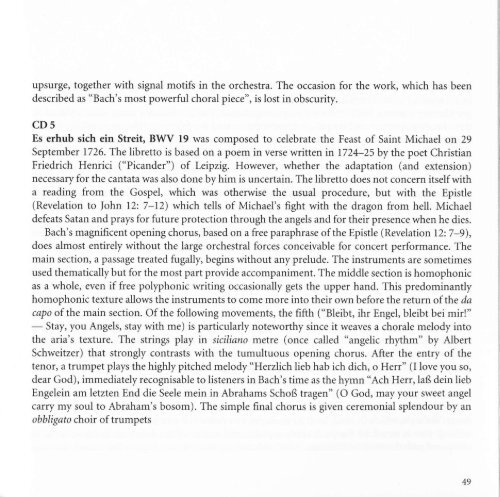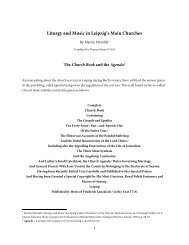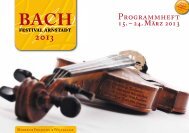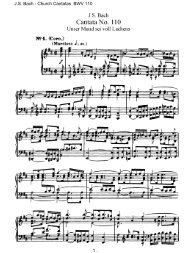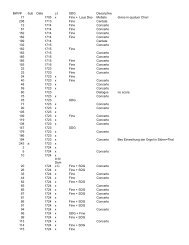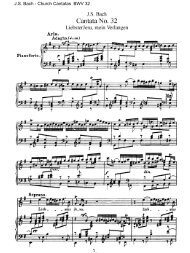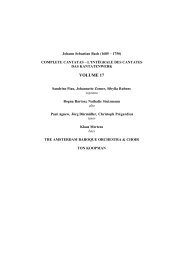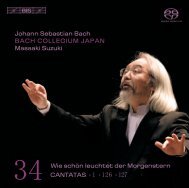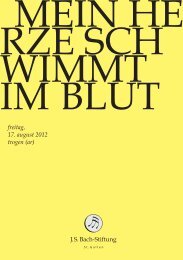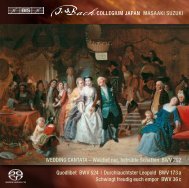Bach Cantatas, Vol. 2 - F. Werner (Erato 10-CD)
Bach Cantatas, Vol. 2 - F. Werner (Erato 10-CD)
Bach Cantatas, Vol. 2 - F. Werner (Erato 10-CD)
Create successful ePaper yourself
Turn your PDF publications into a flip-book with our unique Google optimized e-Paper software.
upsurge, together with signal motifs in the orchestra. The occasion for the work, which has been<br />
described as "<strong>Bach</strong>'s most powerful choral piece", is lost in obscurity.<br />
<strong>CD</strong>5<br />
Es erhub sich ein Streit, BWV 19 was composed to celebrate the Feast of Saint Michael on 29<br />
September 1726. The libretto is based on a poem in verse written in 1724-25 by the poet Christian<br />
Friedrich Henrici ("Picander") of Leipzig. However, whether the adaptation (and extension)<br />
necessary for the cantata was also done by him is uncertain. The libretto does not concern itself with<br />
a reading from the Gospel, which was otherwise the usual procedure, but with the Epistle<br />
(Revelation to |ohn 12: 7-12) which tells of Michael's fight with the dragon from hell. Michael<br />
defeats Satan and prays for future protection through the angels and for their presence when he dies.<br />
<strong>Bach</strong>'s magnificent opening chorus, based on a free paraphrase of the Epistle (Revelation 12:7-9),<br />
does almost entirely without the large orchestral forces conceivable for concert performance. The<br />
main section, a passage treated fugally, begins without any prelude. The instruments are sometimes<br />
used thematically but for the most part provide accompaniment. The middle section is homophonic<br />
as a whole, even if free pollphonic writing occasionally gets the upper hand. This predominantly<br />
homophonic texture allows the instruments to come more into their own before the return of the da<br />
capo of the main section. Of the following movements, the fifth ("B1eibt, ihr Engel, bleibt bei mir!"<br />
Stay, you Angels, stay with me) is particularly noteworthy since it weaves a chorale melody into<br />
-<br />
the aria's texture. The strings play in siciliano metre (once called "angelic rhythm" by Albert<br />
Schweitzer) that strongly contrasts with the tumultuous opening chorus. After the entry of the<br />
tenor, a trumpet plays the highly pitched melody "Herzlich lieb hab ich dich, o Herr" (I love you so,<br />
dear God), immediately recognisable to listeners in <strong>Bach</strong>'s time as the hymn "Ach Herr, laß dein lieb<br />
Engelein am letzten End die Seele mein in Abrahams Schoß tragen" (O God, may your sweet angel<br />
carry my soul to Abraham's bosom). The simple final chorus is given ceremonial splendour by an<br />
obbligato choir of trumpets


